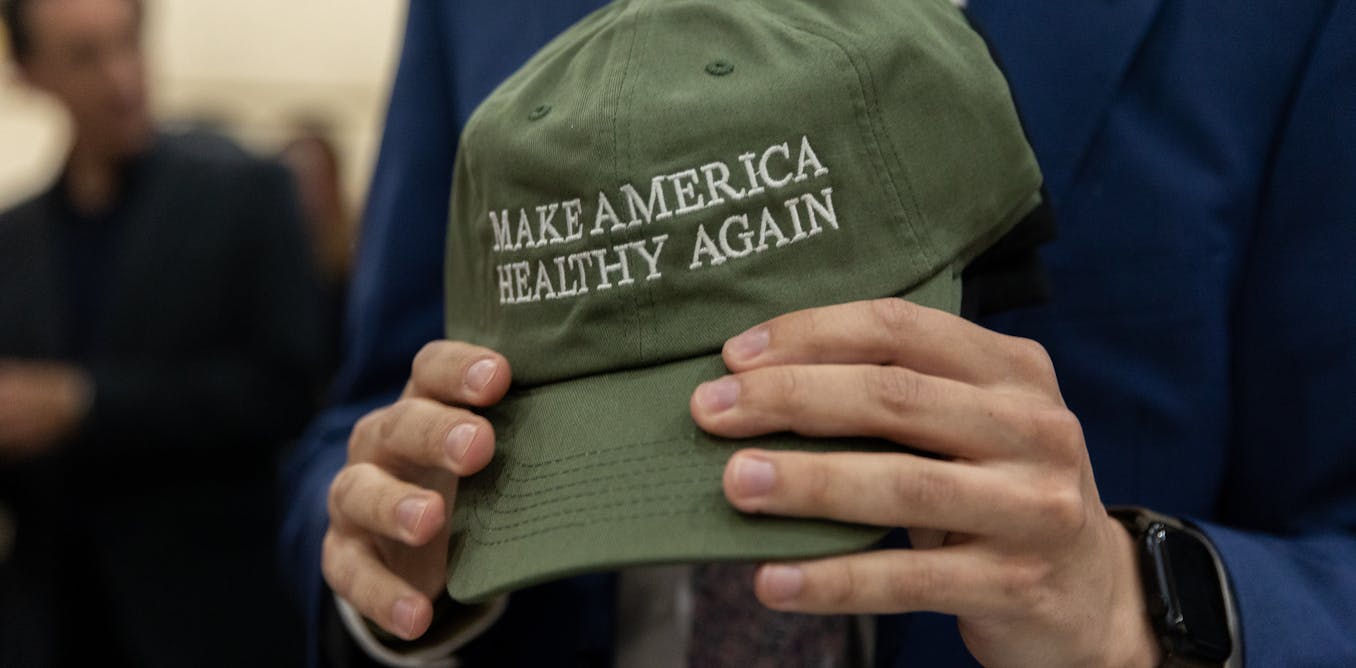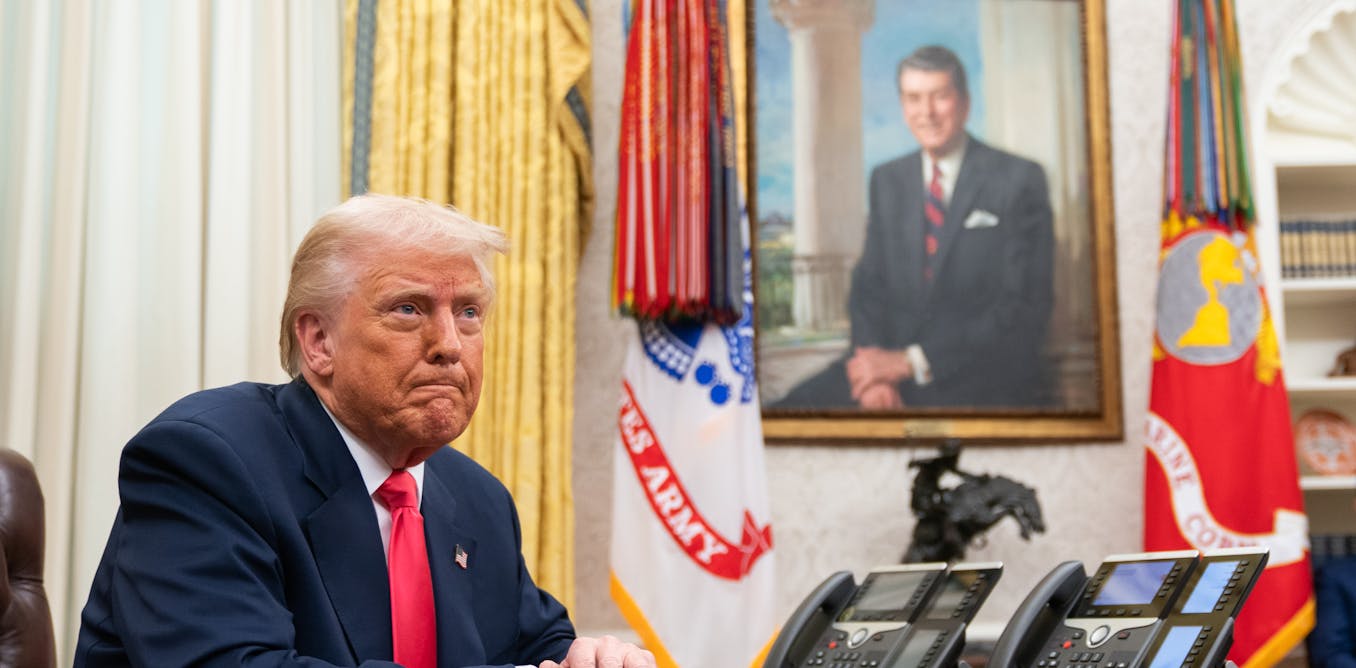Watch the video by The Ultimate Discovery
Prosthetics and surgeries of WW1 and examples of what was achieved. In World War One, lots of soldiers had to deal with the harshness of mechanized warfare. They had to face things like nonstop artillery strikes, constant machine gun fire, and the terrible burns caused by all sorts of combat. Even though doctors tried their best, a lot of these soldiers didn’t have the awesome life they hoped for after the war. Get ready to be amazed and maybe a little shocked. This is what patients had to deal with back in the day when plastic surgery began.
Check Out These Videos:
The Tragic History of WW1 Plastic Surgery
Photos of WW1 Plastic Surgeries [Before and After]
In World War I lots of soldiers had to deal with the harshness of mechanized Warfare they had to face things like non-stop artillery strikes constant machine gun fire and the terrible Burns caused by all sorts of combat even though doctors tried their best a lot of these soldiers didn’t have the awesome
Life they hoped for after the war get ready to be amazed and maybe a little shocked this is what patients had to deal with back in the day when plastic surgery began plastic surgeries then and now the internet is full of cautionary tales about plastic surgery from famous
Celebrities to people looking to emulate their Idols it’s quite a spectacle cosmetic surgery has come a long way and is much better now but sometimes it can still have bad results plastic surgery is super common now and lots of people think it’s all about looking better but way before that people used plastic
Surgery to help folks with bad injuries feel better about themselves these gruesome surgeons gained Fame for their incredible work during World War I and World War II but it’s a shame we don’t often get to hear from the patients themselves about these surgeries the people who were hurt in these terrible
Accidents became the test subjects for doctors who wanted to improve how people look while their bravery helped Advance scientific knowledge the soldiers were left with painful reminders of a war that was just too costly tank officer Robert Cohen had a pretty rough time on the battlefield during the battle of the
Sum it was like a NeverEnding nightmare for him as he saw his friends die during his time fighting foreign enemies in 1917 the sound of gunfire started again to to Signal another day on the battlefield he got ready for another long day but little did he know it would
Be his final one in battle as he stepped outside the sky had a reddish tint the last thing he could recall was a really loud boom before everything went dark now he was in the hands of his comrades being taken back to base for a unique experiment a fun makeover for his face
But let’s take a quick detour before we jump into Robert’s story and explore the fascinating journey of plastic surgery from its humble beginnings to its prominent status today the history of plastic surgery did you know that plastic surgery has been around for a really long time like ancient Indian surgeons were doing it
Way back in 800 BC the tragic history of World War I plastic surgery there was this guy named sushruta who was the first to write about skin grafts this compendium is like a treasure Trove of ancient surgical techniques it shows how India has a super interesting history
When it comes to surgery things didn’t go so well for a while after this the technology and the people had their fair share of limitations which held back progress for many years some really smart people took their time and then Roman doctors came along and made more cool discoveries because they really
Liked making people look good they would sometimes try to fix up ex Gladiators to bring back their old awesomeness we made some cool improvements ments to the soft parts of your face like the ears nose and lips it’s pretty awesome galin of Greece and Alis Cornelius celsus made important contributions to
Reconstructive surgery their work in dereda still influences the field today even after 1700 years as things progressed we discovered new ways to make medicines some used basic ethanol While others used Opium poppy capsules with morphine or henbane scenes with Scopolamine it was a mix of simple and F
Fancy remedies progress really took off in the 20th century when big battles and super powerful weapons showed up lots of new injuries popped up that no one had ever seen before let’s talk about what happened when we faced the enemy more people started getting hurt in the face
One reason for this was the kind of cover a trench offered it made the solders face the most exposed part of their body the bullets got a makeover and went from being round to pointy they really liked embedding the elves in flesh and bringing along some clothing
And dirt for the ride all of a sudden surgeons had to come up with cool new ways to fix people’s faces lots of people thought it was a chance to take plastic surgery to a whole new level and focused all their efforts on it we’ve made great progress in anesthesia and
Infection prevention some of the facial surgeries were needed to help soldiers function better like fixing their jaw for chewing and reshaping their nose for easier breathing but a lot of the surgeries were just to make them look better we only realized how important our faces are when we saw the huge
Number of injuries we were dealing with our looks were not just connected to things like doing well and having a great love life but also to our own sense of who we are only when this important realization hit plastic surgery found its spot alongside other respected surgical practices back in the
Day haral Gillies was the go-to plastic surgeon he used his fancy surgical technique on a whopping 5,000 patients his results were all over the place just like the injuries he dealt with he wrote about different case studies which showed that he was trying out new things imagine spending years in treatment
Unable to go back to the battlefield and coming home with lasting disabilities not exactly a fun situation huh Robert Cohen okay let’s bring the conversation back to Robert now while he was half asleep waiting for his surgery he remembered the nurses talking about his condition things weren’t looking great
For him but he found out about a surgeon who was getting ready to operate on him soon and give him a brand new face no mirrors were allowed in the hospital and his face was wrapped up so much that he couldn’t even recognize himself anymore luckily Robert made it through the
Surgery however his return to the naive world of his hometown in Australia did not come with the triumphant sounds of Victory and courageous service he really wanted to fit in but it seemed like nobody cared about his struggles he saw his friends who hid their pain being
Embraced by others even though he had visible reminders of his own battles it changed him his identity vanished in those fields in Southern France blending into the soil even now signifying the end of one life and the beginning of another he used what he knew to create a
New identity like a wooden mask with 32 White Stripes it was his way of of showing how empty the world had become Peak through two tiny holes and catch a glimpse of a guy who’s been rejected by society and is really craving some human connection
He never took off his mask not even for a moment that was his way of showing his dedication he looked the part and when it was time for him to say goodbye to the world he fought so hard for he lay there as the coffin went down Mars still
Stuck to him a constant reminder of how we struggled to embrace the realities of War sadly many soldiers like Robert often suffer from similar injuries after War it’s a stark contrast between those who support war and praise its bravery but struggle to accept the soldiers who come back changed both physically and
Emotionally these procedures were supposed to be a GameChanger but unfortunately doctors weren’t ready for the harsh reality of society the horror of plastic surgery kids played High hideand-seek with their Dads lovebirds looked the other way and couples who used to be Inseparable daydreamed about what might have been gradually growing
Apart let’s just say their love for trumpets and marches wasn’t everyone’s cup of tea these early attempts at plastic surgery helped set the stage for the cool aesthetic surgeries we have today surgeons discovered that the better they were at restoring a person’s face to its original look the higher the
Chances of that patient leading a fair ly normal life and sometimes we forget to understand and appreciate the immense sacrifices made by those who fight for our freedom and Triumph This is to remind everyone that the young soldiers we see on TV don’t always match the true experiences of War we should never
Forget the brave soldiers who have been injured and sacrificed so much we really care about faces especially now more than ever just look at social media where plastic surgery has become super popular plastic surgery has its benefits for people with functional issues however it’s important to acknowledge that some people undergo these
Procedures to meet society’s superficial expectations how the soldiers suffered in war this amazing medical field helps restore both the appearance and function of those who have been hurt let’s dive into the fascinating world of Prosthetics and surgery we’ll explore a quick history how the first world War influenced its progress and some amazing
Achievements along the way let’s begin by exploring the origins of plastic surgery and Prosthetics as we know them today it’s actually quite interesting did you know that people in ancient Egypt like 3,000 years ago had these cool fake body parts it’s true back in the day a fancy lady rocked a fake toe
To rock some sandals how cool is that during the same time there was an Indian physician named sushruta who who wrote one of the earliest books on medical procedures the sushruta samita had a bunch of info on more than 1,000 diseases different ways to treat them
And just for fun a bunch of surgeries to fix things up we did some surgeries to fix the skin and make the nose look better so a skin graft is like moving some healthy skin from one spot to another that needs help sua had a cool
Way of making a new nose he would take a piece of skin from the forehead and bring it down to create a nose pretty neat huh we’ll be using this method for a while in the Middle Ages Knights and Nobles sometimes used prosthetic limbs in their armor to hide
An old injury pretty clever right although they didn’t work it was a creative way to cope with the embarrassment of having those injuries Prosthetics have come a long way thanks to the awesome skills of ambois peir a French Barber surgeon from the 16th century he played a big part in
Improving Battlefield Medicine by discovering that certain treatments have antiseptic properties this helped more people survive and meant they didn’t have to just burn wounds anymore he came up with cool stuff like fake teeth robot arms and bionic eyes and made a bunch of cool gadgets he observed that people who
Received artificial limbs were less likely to commit suicide which is something many would prefer over living after amputation but hey who can blame them life’s better with limbs Pear’s limbs were designed to work well and be similar to real human body parts one of his coolest inventions was a robot hand
That moved just like a real hand he was so famous that he got to work for Four Kings pe’s designs sparked the creativity of many surgeons and Engineers leading to the development of new and exciting Prosthetics by individuals like Peter Verdun and Jim’s pots designs got better not just to work
Better but also to look cooler but the reason why we needed better Prosthetics was because more people were surviving war injuries thanks to advancements in medicine plus longer surgeries became possible with improved anesthetics lots of folks came out of the battlefield with missing Limbs and no other War had as many injured people
As the first world war it was a real doozy the horror of World War I a lot of injuries and battles happened because of guns and stabs the first world war was the first big fight between Advanced countries using industrial Warfare but let’s keep it simple and add a bit of
Fun War became more intense than ever before with non-stop artillery and machine gun attacks as well as the introduction of deadly war machines like planes and tanks lots and lots of people died and many more got hurt surgeons who are used to treating injuries from guns and knives found these War related
Wounds to be on a whole new level the hospitals were packed with injured soldiers both in the field field and back home lots of people lost their arms and legs which is sadly common in war but a whole bunch of folks ended up with really bad facial injuries in trench
Warfare bodies were well protected but heads sticking out above the parapet were an easy target it was like a game of hide and seek but not so fun boom stuff went flying and smashed into soldiers heads and faces causing big damage back When The War Began they
Didn’t have a good way to take care of those facial injuries doctors would try to sew up the wounds but sometimes the patient’s face would end up looking Twisted with missing eyes noses and Jaws these soldiers would be in a bit of a pickle not knowing who they are and
Being scared to go back home they knew people might avoid them because of their appearance their families might have a hard time looking at them and finding a job could be tough Herman Gillies to the rescue this guy named Major Herman Gillies from New Zealand was like hey
Let’s fix this problem in a big way he saw with his own eyes the really bad face injuries that a lot of the soldiers had after coming back to Britain he managed to create a special Ward for facial injuries at the Cambridge Military Hospital pretty cool huh before
You know it this place became a super cool hospital called the Queen’s Hospital found at frog Nell House Gillies was a Trailblazer and using skin grafting for big reconstructive surgeries one of the best ways to do it is by lifting a big flap of healthy skin
Which we call a pedicle it’s pretty cool so there’s this little piece of skin that’s close to the wound or the part of the face that needs fixing it’s still attached to where it came from we can move the other end of the pedicle to the injury site without cutting off its
Connection to the body it’s like giving it a little relocation party to increase the chances of the body accepting the skin graft it was important to keep the blood flowing one of gillies’s most well-known patience was Walter yo he bravely served on the HMS War spite during the Battle of Jutland and worked
With the guns we’re not exactly sure how he got hurt but he ended up with some serious Burns that made him lose his eyelids ouch Gillies would use this cool new procedure to treat yo it’s simple and a bit fun yo was probably one of the first patients to get this kind of
Surgery pretty cool huh it might take a while with a few surgeries along the way so basically they did this cool thing where they took a piece of skin and put it on Yo’s face and eyes this not only fixed his damaged face but also gave him new eyelids pretty neat huh Gillies
Connected this mask using little tubes Gillies had to get rid of the scar tissue before putting on the mask so that Yo’s face could be rebuilt and have healthy skin things didn’t go smoothly and after 5 days yo got a bad infection it was so bad that the mask was floating
On a layer of pus gross good news surgery helped save a lot of the transplanted skin from going to the hospital by November 1917 he had to go through lots of surgeries and Wait Almost 2 years until he was finally discharged in July 1919 yo had a few eye problems but still
Managed to live until 80 and even went back to the Royal Navy gillies’s work gilles’s work kept going strong throughout and Beyond the second world war during the time between the wars he traveled all around the world to teach his plastic surgery techniques and set up his own private practice it was quite
An adventure in the second world war he helped the British Armed Forces by teaching surgeons how to treat injured soldiers after World War II he started doing the first surgeries to change people’s sex he set the rules for how to do these surgeries for a some time
People’s concerns prior the war on top of getting surgery lots of soldiers got cool prosthetic to help with their injuries there were a lot of guys getting hurt and people were worried about losing a big chunk of their workers before the war fake limbs were either super expensive or just for show
The tricky part was coming up with practical substitutes for joints and fingers but hey we love a good challenge here’s a cool idea from an Italian orthopedic doctor named Juliano Fant Grossi let’s make a motive lap we wanted to use the leftover muscle and skin of the amputees to control the prosthetic
In a cool way in 1915 about 10 years after fant’s first writings a German surgeon named Ferdinand SAU Brook came up with a new way of doing things whether this method works or not really depends on how much tissue is left after the surgery so fingers crossed there was
Another cool way to help people with facial injuries they got to wear masks in Britain a sculptor named Francis Derwin wood was the one who created these masks how cool is that when wood started working as an orderly he used his artistic skills to make fancy splints for the patients but then he
Figured out that he could use his skills to help people with really bad facial injuries in March 1916 he started his own team to make masks usually using tin or copper it was pretty cool we’ll make each mask by using a plaster cast of the patient’s face it’s like creating a cool
And personalized mask just for them wood would carefully use the castings to reconstruct the patient’s face filling in any missing parts after fixing and polishing the metal wood would add a Special Touch by painting a one-of-a-kind portrait on the mask we’ll find the perfect skin match to make a
Seamless transition Woods work got other artists excited to join in and do similar things an American sculptor named Anna Coleman lad reached out to Wood and they worked together to make the process better and more enjoyable everyone agrees that lad’s masks looked more real lad decided to take a trip to
Paris and start her own mask making business she loved adding human hair to make eyebrows or mustaches which added a fun touch to her Creations these masks were usually stuck to someone’s face with glasses if you’re a fan of Boardwalk Empire you might remember Richard Harrow and his cool mask lad
Made about 180 of these masks but we’re not sure how many would made it’s a bit of a mystery not all of the 20,000 men with facial injuries got a mask but those who did had a chance to fit back into society and rebuild their confidence but for a
Lot of people who were changed by the terrible events of World War I they were treated as Outsiders as not the same as not as important lots of guys had a hard time finding work so they ended up doing jobs that weren’t as well known Gillies did a great job even teaching his
Patients new skills so they could find better jobs after the war how cool is that however lots of people had a hard time getting back in touch with their families and loved ones some people choose to stay in the hospital because they know they might not be treated well
Outside War can really mess people up leaving them broken and forever changed during the first world war around one in seven soldiers came back with injuries that changed their lives it’s tough for those affected to get back into civilian in life whether it’s because of the mental or physical
Injuries they got the amazing efforts of doctors engineers and artists surely made a big difference in rebuilding the men’s bodies but a lot of times those soldiers came back to a world that didn’t fit them even now people with facial differences are sometimes portrayed as villains like in the James Bond
Movies Walter Yo’s treatment inspired the creation of a splicer enemy in the Bioshock video game pretty cool right losing a part of oneself in war is already tough but being treated as less when they come back would have made it even worse let’s dive into the fascinating history of modern plastic
And restorative surgeries let’s give credit to the brave men who pioneered and carried out these surgeries they weren’t just Oddities but individuals who wanted to reclaim what was lost they deserve recognition for their efforts hey guys before we move on with this exciting Journey let’s take a look
At our subscribers pick for today in the gruesome photo we can see Walter yo who was a victim in the tragic history of World War I plastic surgery yo sustained facial injuries during the Battle of Jutland in 1916 including the loss of his upper and lower eyelids as you can see the tube
Pedicle produced a mask of skin grafted across his face and eyes producing new eyelids the results although far from perfect meant that he had a face once again all thanks to Gillies who went on to repeat the same sort of procedure on thousands of others so guys we would
Like to know your opinion on the plastic surgery done on this handsome young man drop your comments in the comment section the facial Prosthetics of World War I when you first look at these photos from World War I they might seem pretty ordinary let’s talk about medals big button jackets fun and easy
Band-Aids check out these eyeglasses those weren’t for vision they were for support inside the studio sculptors worked their magic to hide the most important facial injuries of the War World War I was a pretty intense time there were machine guns tanks and even lethal gas attacks but you know what
Really ruled the battlefield artillery those big guns were the go-to for attacking trenches picture artillery as big cannons that shoot powerful shells boom check out this cool chart that gives you estimates of artillery rounds used in battles from the American Civil War to World War I it’s pretty interesting during the Battle of
Gettysburg a whopping 32,000 rounds were fired in the battle of the s in 1916 a staggering 4 million soldiers were involved wow there were so many shells dropping from the sky they were causing a lot of dangerous flying debris wow that attack caused around 20,000 people to get hurt in the face
Medicine had to deal with that big challenge this book on plastic surgery was published after the war and has some super cool techniques for stitching and moving skin around back in the day they were doing some pretty cool stuff with noses and ears like putting cartilage in
The nose or using grafts on the ear but there were some cases that were too difficult for these plastic surgeons to handle and then the sculptors joined the party Anna Coleman lad used to be a sculptor and writer in America before she found found herself in this cool
American Red Cross studio in Paris in 1917 she brought the sculptor Francis Derwin Woods cool techniques to the Red Cross in France and started her own Studio how awesome is that they created molds of the injured faces and crafted attachments to bring back their original appearance they used these to create a
Super thin copper plated thingy which lad and others then painted fun times check it out eyebrows and mus mustaches were crafted using real hair or even bits of tin foil and the outcome was absolutely mind-blowing they had these cute little ties that went around their ears or sometimes they wore glasses they
Created over 150 of these masks pretty impressive huh Anna Coleman lad came back to America after the war she made lots of sculptures that looked like her artwork from before the war Flawless figures not caring about artillery charts figures with perfect vision in 1923 she made a super interesting World
War I memorial for the American Legion in Manchester Massachusetts it caused quite a stir there was a skeleton stuck in some prickly wire she once said when the Old Masters are gone the new Masters will show how pointless war is and how powerful the human Spirit can be the
Memorial in Manchester had two images one of them was a skeleton named Knight but then she placed Dawn on the opposite side the history of artificial limbs in the US according to a recent article by The Wall Street Journal some 67,000 Germans and 41,000 Britain had to have
Amputations during the course of World War I when the procedure was often the only one available to prevent death during this period scientists also developed what we consider today to be Essential Medical Treatments such as the ability to successfully transfer and Bank blood identify and treat bacteria and and properly sterilized medical
Instruments the demand for limbs skyrocketed after World War I and the US government found itself in an expensive conundrum although the government had promised to provide limbs for a lifetime to Veterans after the Civil War fulfilling the same promise after World War I was untenable just as Henry Ford
Was mass-producing automobiles the US government decided the best way to deal with limb loss was through the mass production of prosthetic limbs initially this idea of a universal prosthesis seemed genius manufacturers could reliably create a consistent product to fit a great need at a lower cost than custombuilt prostheses these Universal prostheses
Were aimed at helping returning soldiers get back into the workforce as these veterans returned to the US with changed bodies ones that did not fit into the world and the roles that they once occupied there were proposals to help align their bodies with the work at hand
The Red Cross published a list of professions and job descriptions for careers that could be performed by one-armed or one-legged men for reduced wages as well as training programs to become skilled laborers the designs of these Universal prostheses also shifted with attempts to increase the employability of veterans at first
Scientists designed Universal prostheses with lifelike fingers later Rehabilitation Specialists decided that giving amputees tools as prostheses could potentially open new career paths in manufacturing and skilled trades Axis countries experimented with similar approaches in Germany researchers carried out extremely thorough studies on which types of pincers would be most universal for a functioning arm
Prosthesis but imagine having a wrench permanently attached to your arm not exactly an ideal Solution that’s all for now thanks for watching stay tuned for more for
About The Ultimate Discovery
Welcome to the The Ultimate Discovery! We are your reliable source for totally engaging and transformative content, never ending, aw-inspiring discovery, and binge-worthy entertainment.
Video “The Tragic History Of WW1 And Plastic Surgery” was uploaded on 01/22/2024 to Youtube Channel The Ultimate Discovery



































